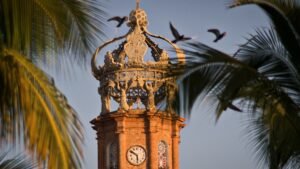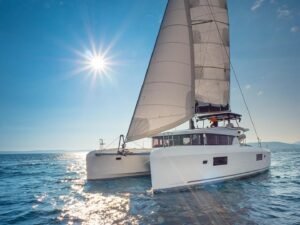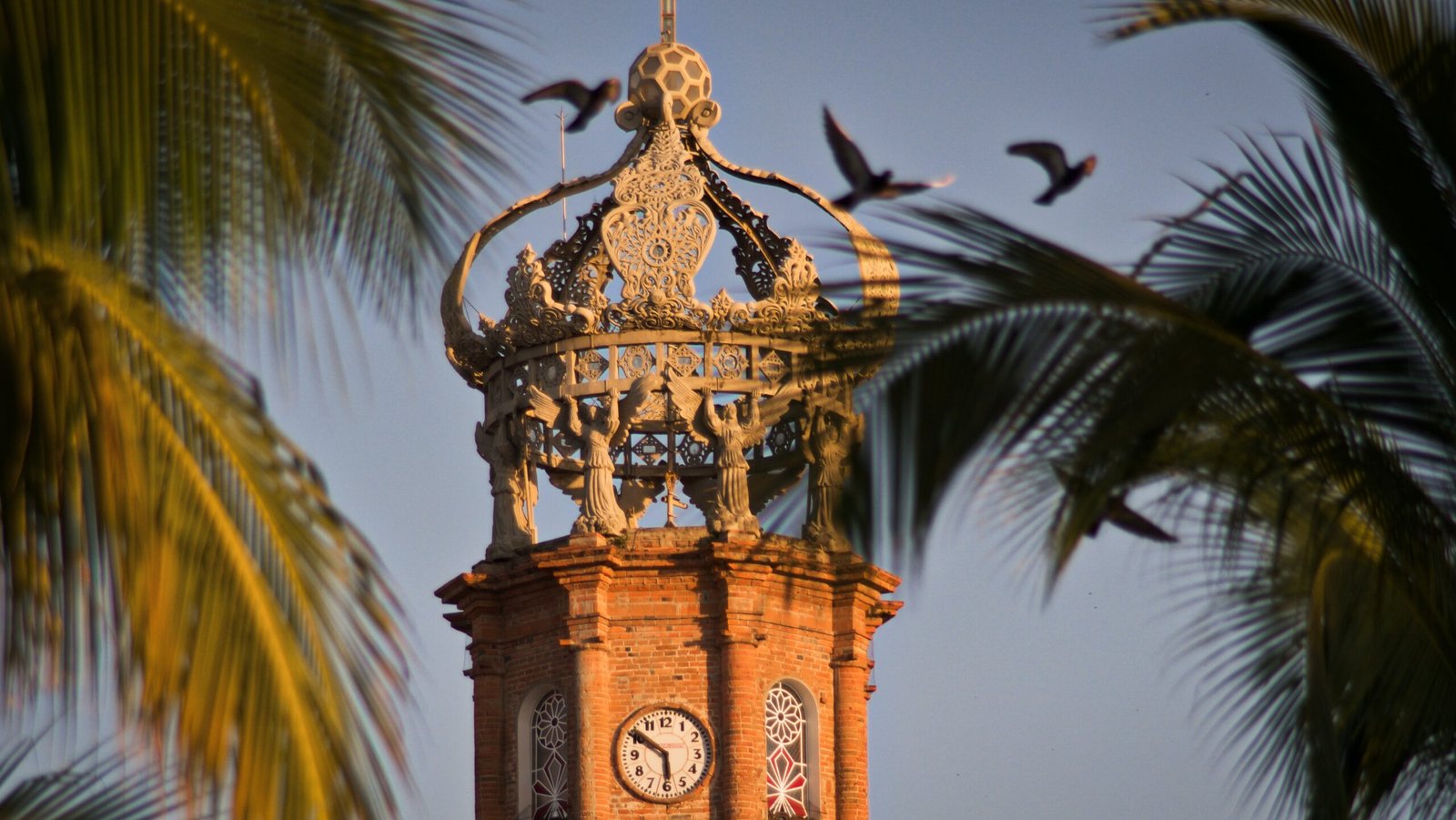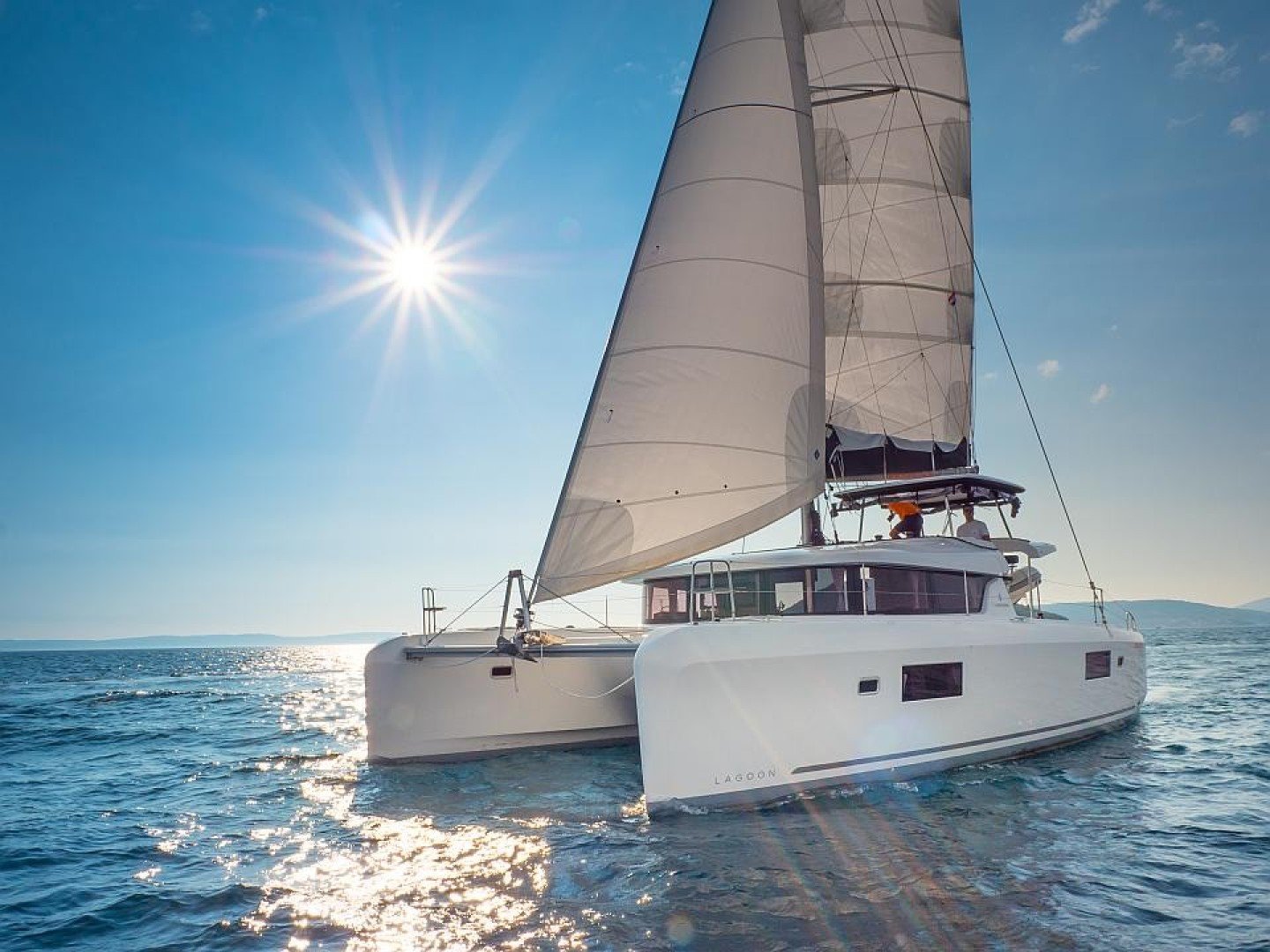Puerto Vallarta is renowned for its charming coastal setting, nestled among mountains, and boasts a rich history along with a unique blend of Mexican traditions and modern amenities.
Not only that, but the city is known for its golden sandy beaches, clear blue waters, and lush greenery, making it an ideal destination for beach lovers and nature enthusiasts.
Boasting luxury accommodations and an array of high-end dining establishments, Puerto Vallarta has garnered recognition as a premier luxury travel destination in recent years. Surprisingly to many, Vallarta also boasts a collection of world-class golf courses, masterfully designed by renowned architects like Greg Norman and Jack Nicklaus, among others.
For surf enthusiasts, Puerto Vallarta, with its neighboring areas like Sayulita and Punta de Mita, has emerged as a global hotspot, drawing surfers from all corners of the world. There’s a fantastic article about surfing in Puerto Vallarta if you’re interested to learn more, and where the best spots are. What was once a quaint fishing village has rapidly evolved into a significant player in Mexico’s flourishing tourism industry, attracting cruise ships and beachgoers alike, all lured by the region’s numerous and breathtakingly beautiful beaches.
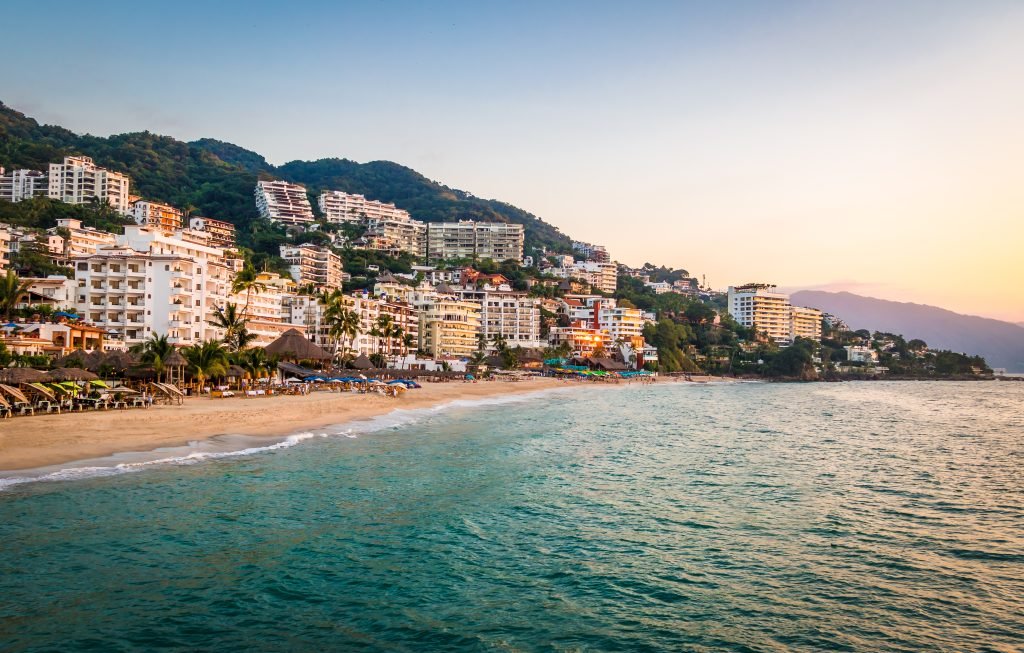
Where is Puerto Vallarta Located?
Puerto Vallarta is located in the western region of Mexico, nestled on the Pacific coast. It is part of the state of Jalisco, and it’s positioned on the Bay of Banderas, one of the largest and most picturesque bays in the country. Its location along the Bay of Banderas provides stunning vistas of the Pacific Ocean and the surrounding Sierra Madre Mountains. Its location is unique, in that Vallarta and the surrounding area of the Riviera Nayarit have ocean on one side, and mountains on the other.
Not just any mountains either, but lush green mountains filled with dense tropical vegetation of thousands of species of flowers and dozens of palm tree species. An absolutely stunning sight, particularly in the Fall after the rainy season has commenced.
We’re frequently asked whether Puerto Vallarta is in proximity to Cancun. Our response is a straightforward, “It’s on the complete opposite side of the country.” Located to the south of Mazatlan and east of Cabo, most people have a general sense of its geographical orientation. However, these inquiries have become less frequent in recent times. Puerto Vallarta is enjoying increasing recognition, with tourism consistently on the rise. It’s not just tourists; people are increasingly choosing to make Puerto Vallarta their permanent or part-time home, year-round.
This Mexican coastal paradise has been attracting people from all over the world because of the wide variety of things to do in Puerto Vallarta. With tons of free things to keep you busy and entertained, Vallarta has no shortage of ways to occupy your days under the warm sun.
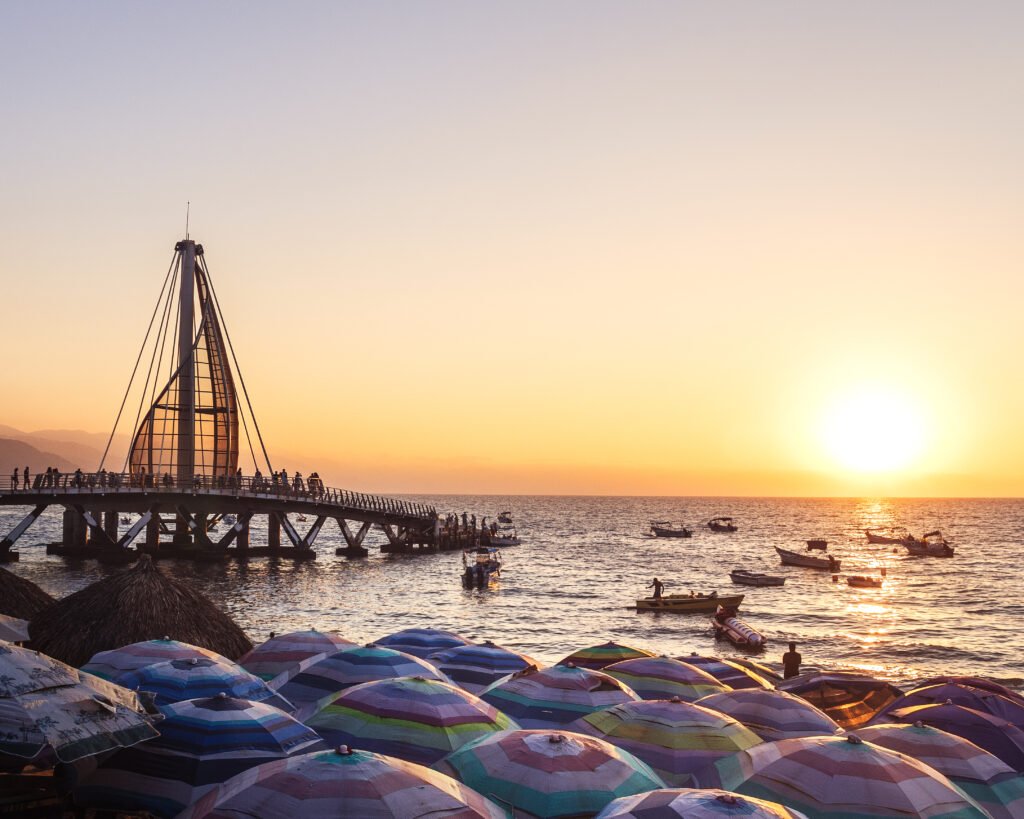
Where is Riviera Nayarit located?
Situated in the neighboring state of Nayarit, just a 15-minute drive north up the coast from the airport in the opposite direction of downtown Vallarta, it has emerged as a prominent and attractive destination. Here you can find beautiful high end resorts like Vidanta, the Four Seasons, St Regis, and all inclusives like Paradise Village, Hard Rock, Grand Velas Nayarit, and many more.
- This area is part of the state of Nayarit and is renowned for its pristine beaches, luxurious resorts, and serene atmosphere.
- Riviera Nayarit offers a more relaxed and tranquil experience compared to the bustling streets of Puerto Vallarta. It’s often considered a haven for those seeking a quieter and less crowded beachfront escape.
- The region is also known for its beautiful coastal towns and villages, each with its own unique character and charm.
- Popular destinations in Riviera Nayarit include Punta Mita, Sayulita, San Pancho (San Francisco), and more.
Together, Puerto Vallarta and Riviera Nayarit create a diverse and enchanting destination on Mexico’s Pacific coast. While Puerto Vallarta is celebrated for its lively atmosphere and vibrant culture, Riviera Nayarit offers a peaceful and idyllic escape, making the entire region an appealing choice for traveller’s looking to experience the beauty and warmth of Mexico’s west coast.
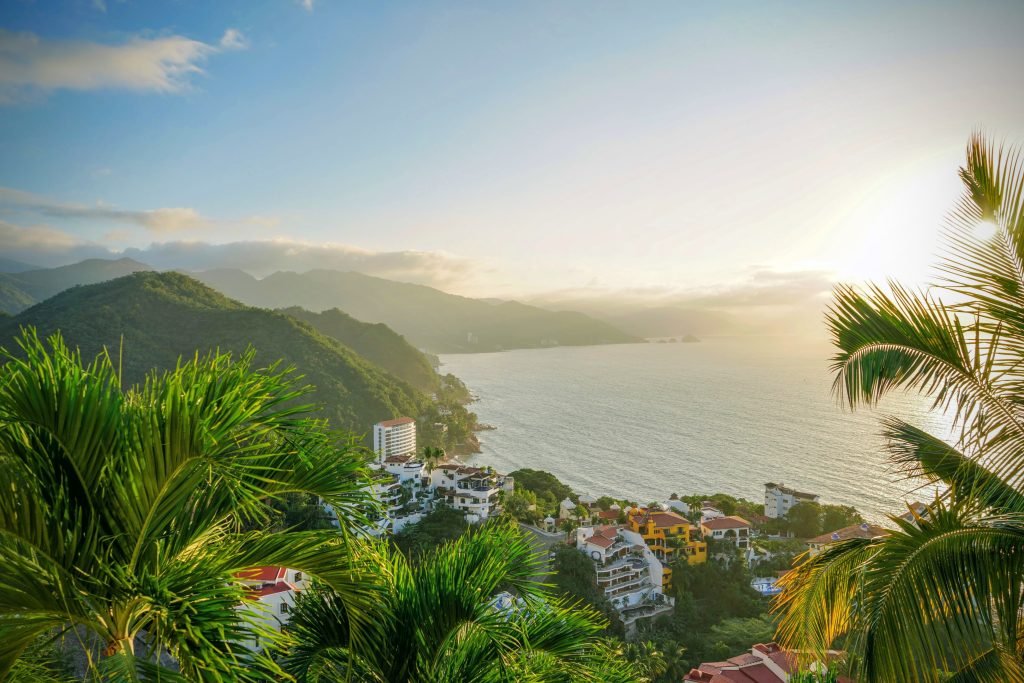
What Does Puerto Vallarta Mean?
The name “Puerto Vallarta” is a combination of two parts:
- Puerto: In Spanish, “puerto” means “port” or “harbor.” This part of the name signifies its coastal location along Banderas Bay, a natural harbor on the Pacific coast of Mexico.
- Vallarta: The second part of the name is in honor of Ignacio L. Vallarta, a notable Mexican jurist and former Governor of the State of Jalisco in the early 20th century.
Before it was named Puerto Vallarta, the area was known as “Las Peñas.” The name change from “Las Peñas” to “Puerto Vallarta” occurred on May 31, 1918, when the Mexican government invested in the development of the area as a tourist destination. This development led to its name change in honor of Ignacio L. Vallarta and its emergence as a popular tourist destination.
However the name of the bay in Vallarta has a much older name and history behind it.
The name “Bahía de Banderas” translates to “Bay of Flags” in English. It is a reference to an event that took place during the early exploration of the region by Spanish conquistadors. The name dates back to the early 16th century when the Spanish explorer and conquistador Hernán Cortés arrived in the area.
According to historical accounts, when Cortés and his expedition landed in the bay in 1524, they found the indigenous people of the region, likely the Cora and Huichol tribes, lining the shores with colorful flags and banners as a sign of welcome and hospitality. In response to this warm reception, Cortés named the bay “Bahía de Banderas” in reference to the flags.
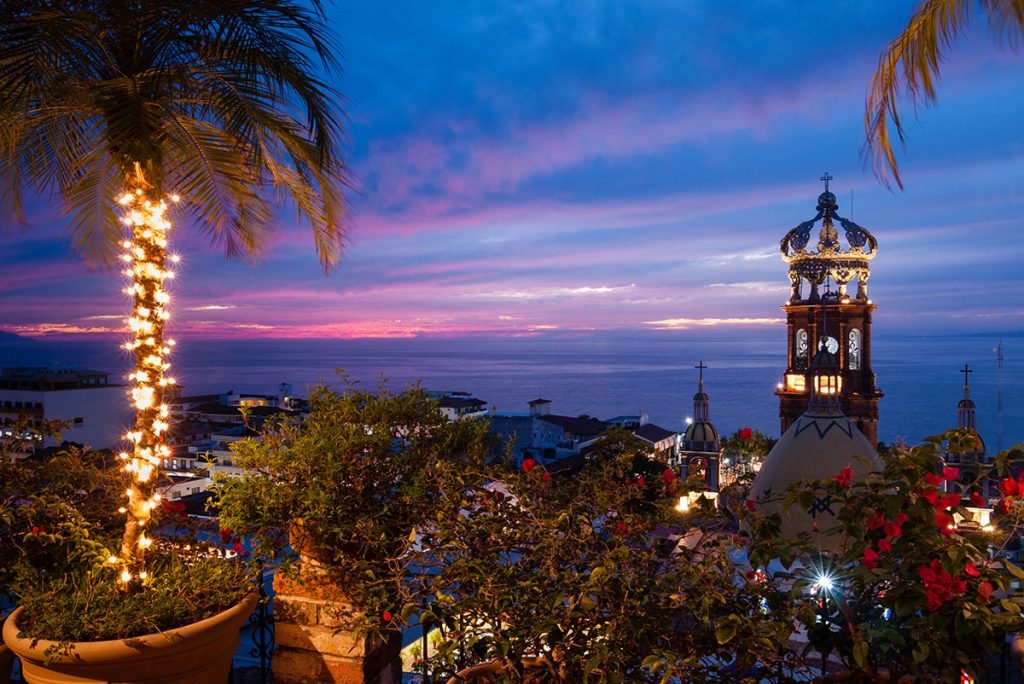
Bahia de Banderas
Bahía de Banderas (Bay of Flags) is a bay on the Pacific coast of Mexico, located between the states of Jalisco and Nayarit. It is the second largest bay in Mexico, with an area of approximately 1,700 square kilometers.
The name Bahía de Banderas was given to the bay when conquistador Hernán Cortés arrived in the area with his Spanish explorers in the 16th century. The explorers were drawn to the bay by the sight of numerous colorful banners flying from the ships of the local indigenous peoples. The explorers believed that the banners were a symbol of peace and friendship, and they named the bay accordingly.
The name “Bahía de Banderas” has been in use for over five centuries and is one of the oldest given names in Mexican history. This bay contains some incredibly rich and diverse marine life, that if you’re traveling on the water with Palmara Yacht Charter, you’ll be able to see many kinds of life swimming on the surface such as: turtles, bottlenose dolphins, humpback whales, sealions, seals, and more. We have another article all about what its like renting a boat in Puerto Vallarta.
Facts you may not know about Bahia de Banderas:
The deepest part of Bahía de Banderas is approximately 1,000 meters (3,300 feet) deep. The average depth of the bay is around 300 meters (1,000 feet). The bay is home to over 700 species of fish, 100 species of marine mammals, and 60 species of reptiles. Arguably the most incredible part of being in Puerto Vallarta from December-April is the migration of humpback whales. The bay is home to the largest population of humpback whales in the North Pacific Ocean.
They migrate to the bay each year to breed and give birth, which gives us all the pleasure of watching them play and breach out of the water every day if you’re watching. For more information on whale watching in Puerto Vallarta, have a quick read at our article all about it!

What is Puerto Vallartas time zone?
Puerto Vallarta is located in the state of Jalisco, Mexico, which is in the Central Time Zone (CST). This means that Puerto Vallarta is 7 hours behind Coordinated Universal Time (UTC). Vallarta no longer adopts daylight savings time, so they will remain in this time zone unchanged.
The following is a table of the time difference between Puerto Vallarta and other major cities around the world:
New York City | +2 hours |
| London | +7 hours |
| Tokyo | +15 hours |
| Sydney | +17 hours |
Facts about Puerto Vallarta
Pre-Columbian Era: Before the arrival of European explorers, the region where Puerto Vallarta is located was inhabited by indigenous tribes, mainly the Nahua, Huichol, and Cora people. These indigenous groups relied on fishing, farming, and trade. The Huichol people still have a significant presence here, not only in their culture imbedded into the people of Vallarta, but their artwork can be seen displayed throughout the city. You can walk by some Huichol people on the streets and the beaches if you’re around the Romantic Zone/Centro area, and if you travel more inland away from the coast.
Spanish Colonial Era: In 1524, Spanish conquistador Francisco Cortés de Buenaventura arrived in the area and claimed it as part of New Spain. The Spanish established small settlements along the coast, but Puerto Vallarta remained a relatively isolated and undeveloped region. For centuries, Vallarta remained a fishing village. In some respects it still is that old fishing village, but is now becoming more like a small city.
Mining and Trade: During the 18th and 19th centuries, the nearby Sierra Madre Mountains became significant for silver and gold mining. The mining activities led to the growth of coastal towns, including Puerto Vallarta, as trade centers for exporting the minerals. Particularly the area outside of Vallarta called San Sebastian. it was here that settlers came and mined the town of it’s silver back in the 18 and 19 hundreds.
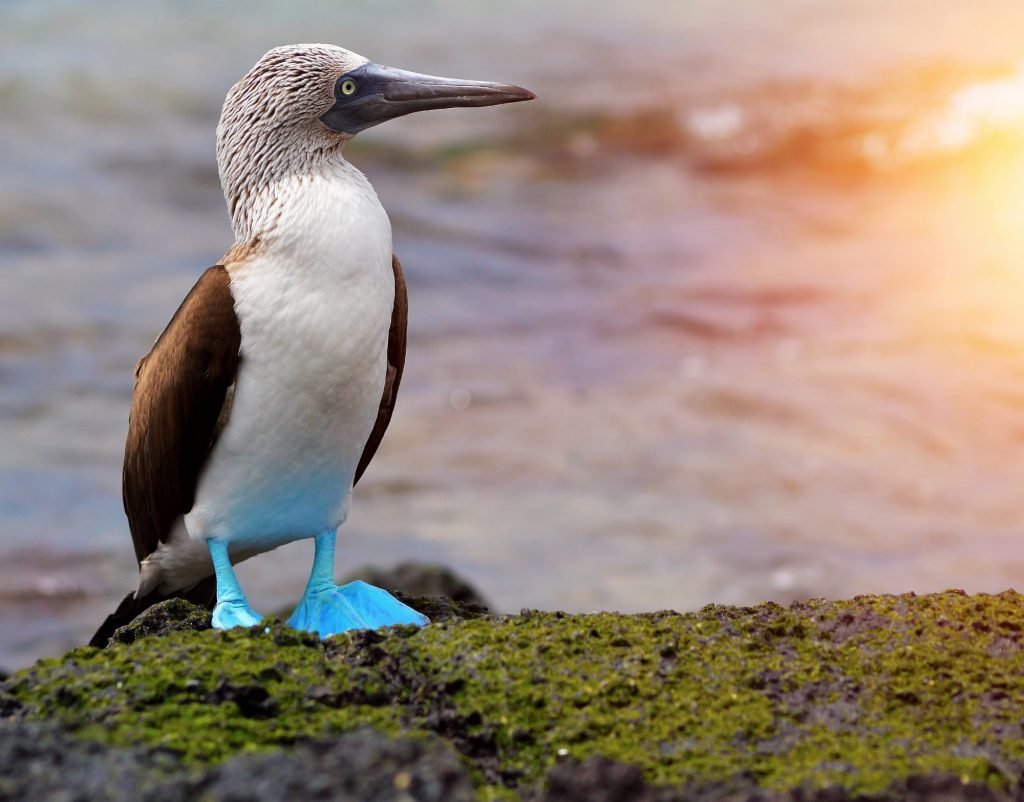
Fishing Village: Puerto Vallarta was a small fishing village until the mid-20th century. The village attracted some attention in the 1960s when it was chosen as the filming location for the movie “The Night of the Iguana” starring Richard Burton and Ava Gardner. The film’s production brought international attention to the area and led to the beginning of its transformation.
Tourism Boom: In the 1970s, Puerto Vallarta experienced a tourism boom as visitors from around the world discovered its natural beauty, pristine beaches, and charming atmosphere. The Mexican government invested in infrastructure development, including airports, roads, and resorts, to accommodate the growing number of tourists.
Growth and Development: Puerto Vallarta continued to develop throughout the late 20th century and early 21st century. Luxury resorts, hotels, restaurants, and other amenities were established, attracting both domestic and international tourists. The city became renowned for its picturesque coastline, vibrant arts scene, and friendly local culture.
Modern-Day Puerto Vallarta: Today, Puerto Vallarta is a popular vacation destination known for its stunning beaches, water activities, cultural festivals, art galleries, and lively nightlife. It has become a favored location for luxury tourism, retirement, and real estate investment. Not only is it a tourism hotspot particularly between the months of November to April (known as high season), but Vallarta and its surrounding towns have become a new home for my foreigners.
Canadians, Americans, British and other have moved here over the last several years more than ever before. The construction, infrastructure development, and new stores/restaurants opening up is more than noticeable. A large english speaking community thrives here now, with many entrepreneurs and the like making Puerto Vallarta their new home.
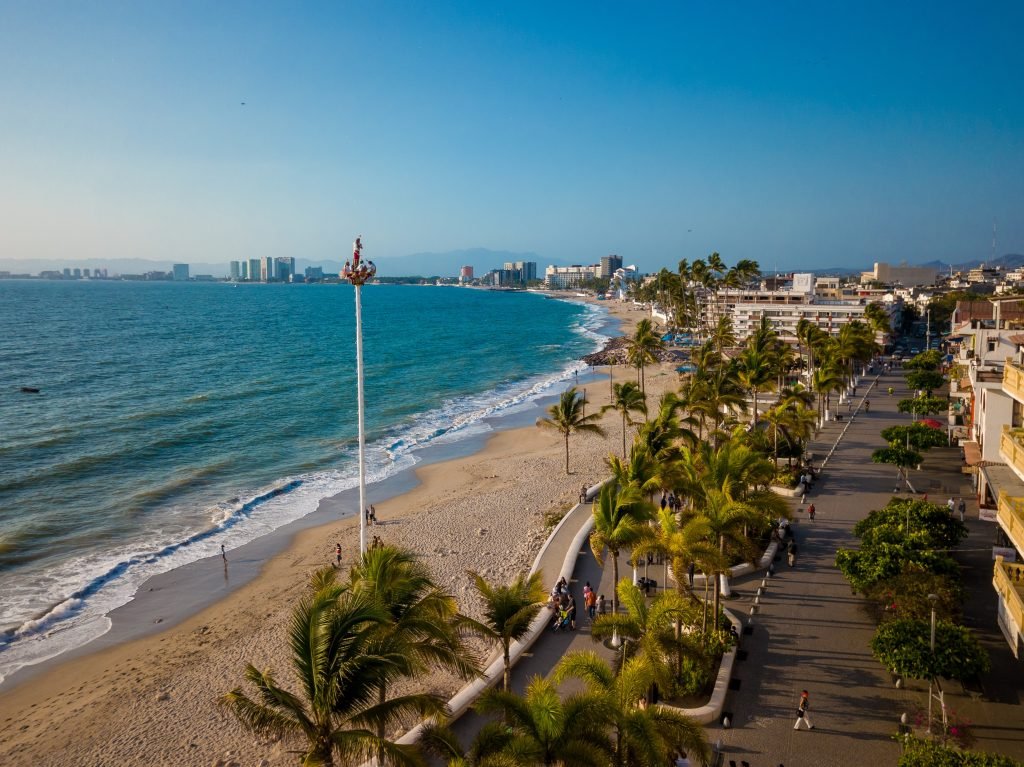
For ALL other things Vallarta, don’t forget to download our eBook “100 Things to-do in Puerto Vallarta.”



